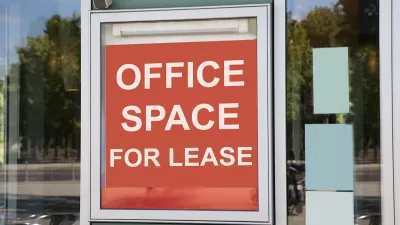Workplaces that employees can reach more quickly are less likely to have high office vacancy rates, a new analysis finds.

An analysis from Moody’s Analytics reveals that metro areas with shorter commute times have lower office vacancy rates, reports Erik Sherman for Globe St. While the analysis acknowledges the role of many other factors in office vacancy and downtown recovery, “ we continue to hear chatter that firms are more reluctant to maintain/expand space in metros where employees have greater difficulty getting to the office.”
According to the analysis, “Four of the top five metros with the largest office vacancy rate decreases were Rust Belt cities including Dayton, Buffalo, Cleveland, and Rochester. At least as of 2021, Dayton, Buffalo, and Rochester featured above average share of commutes less than 15 minutes of one-third or greater.”
On the other end of the spectrum, “four of the bottom 5 metros (San Francisco, Charlotte, Austin, and Louisville) have a share of commutes less than 15 minutes at or below the average of one-quarter with San Francisco having the lowest share of 15%.”
FULL STORY: Short Commutes Help Reduce Office Vacancy Rates

Trump Administration Could Effectively End Housing Voucher Program
Federal officials are eyeing major cuts to the Section 8 program that helps millions of low-income households pay rent.

Planetizen Federal Action Tracker
A weekly monitor of how Trump’s orders and actions are impacting planners and planning in America.

Ken Jennings Launches Transit Web Series
The Jeopardy champ wants you to ride public transit.

California Invests Additional $5M in Electric School Buses
The state wants to electrify all of its school bus fleets by 2035.

Austin Launches $2M Homelessness Prevention Fund
A new grant program from the city’s Homeless Strategy Office will fund rental assistance and supportive services.

Alabama School Forestry Initiative Brings Trees to Schoolyards
Trees can improve physical and mental health for students and commnity members.
Urban Design for Planners 1: Software Tools
This six-course series explores essential urban design concepts using open source software and equips planners with the tools they need to participate fully in the urban design process.
Planning for Universal Design
Learn the tools for implementing Universal Design in planning regulations.
Ada County Highway District
Clanton & Associates, Inc.
Jessamine County Fiscal Court
Institute for Housing and Urban Development Studies (IHS)
City of Grandview
Harvard GSD Executive Education
Toledo-Lucas County Plan Commissions
Salt Lake City
NYU Wagner Graduate School of Public Service





























